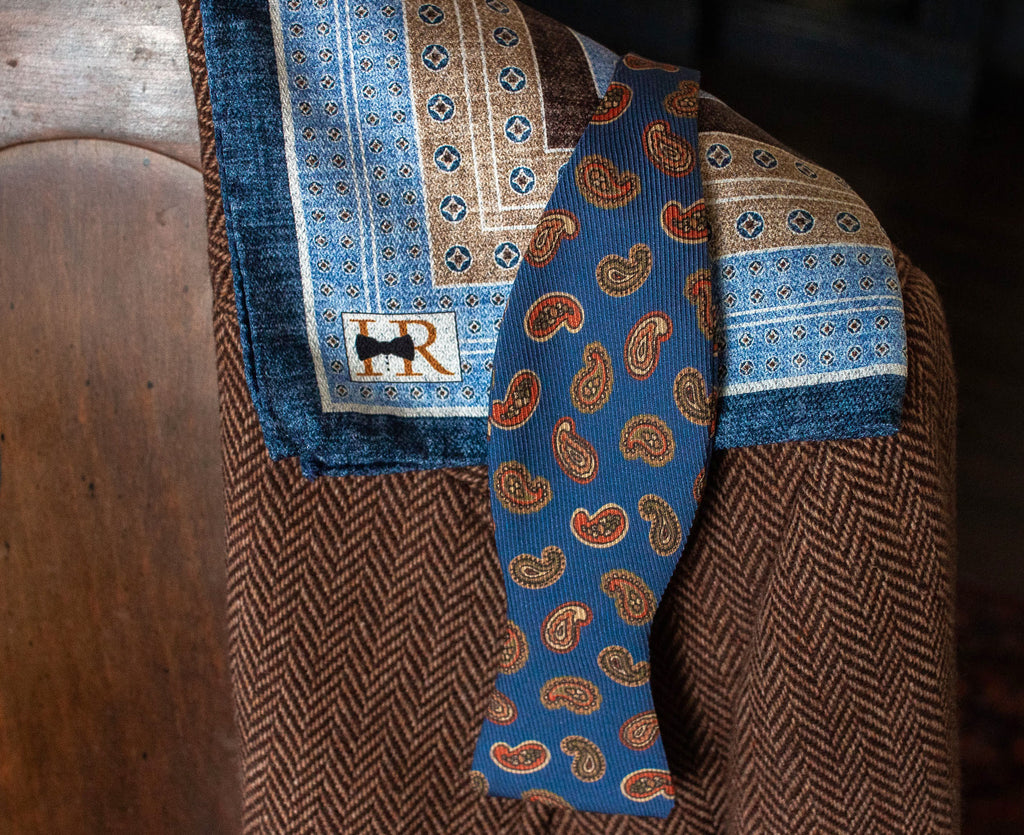Herringbone: The Intriguing Pattern That Never Goes Out of Style

In the realm of textiles, certain patterns stand out not only for their aesthetic appeal but also for their intriguing histories and unique names. One such textile is herringbone cloth - renowned for its distinctive zigzag design that has adorned clothing, fine accessories, flooring and upholstery for centuries.
In this article, we’ll delve into herringbone, answering several questions along the way, including:
- What is herringbone? (And why do they call it herringbone?)
- What’s the difference between the herringbone and chevron?
- What is the history of herringbone pattern?
- What is herringbone fabric made from?
What is a Herringbone Pattern?
First things first: let’s clearly define what a herringbone pattern looks like. Herringbone cloth is so named due to the pattern resembling the skeleton of a herring fish.
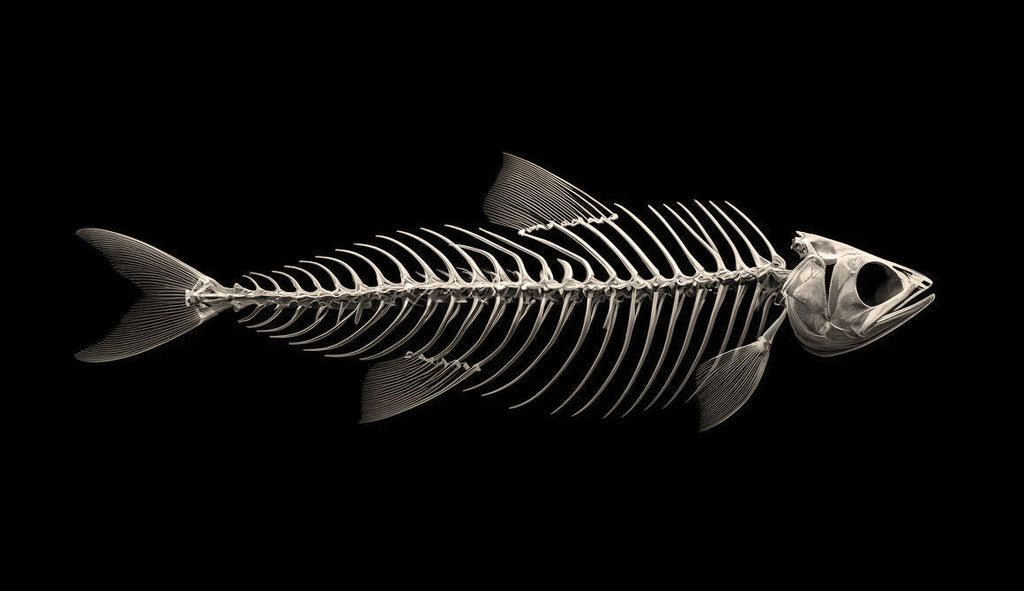
The herringbone pattern is observed in the arrangement of the fish's bones, which intersect at oblique angles to form a distinctive zigzag pattern. The herringbone weave pattern mirrors this arrangement, with rows of slanted parallel lines intersecting to create a visually striking motif.
Herringbone vs Chevron
Some suggest “chevron” as another name for herringbone fabric, but that’s incorrect. While both boast great geometric appeal characterized by a series of V-shaped or parallel lines, herringbone is considered to be far more distinguished, refined, mature, and sophisticated.
Interlocking vs. Parallel Lines
In the herringbone pattern, the lines are arranged in a staggered, interlocking fashion and typically meet at a 45-degree angle.
In contrast, the chevron features parallel lines that meet at a point, creating a continuous, uninterrupted line that ranges from 60 to 90 degrees.

Herringbone (left) vs Chevron pattern (right)
Visual Effect
The herringbone pattern tends to create a more subtle and textured appearance due to its interlocking arrangement, evoking a sense of depth and dimension.
On the other hand, the chevron pattern's parallel lines produce a bolder, more graphic effect, emphasizing sharp angles and clean lines.
Symbolism
Herringbone is often associated with craftsmanship, tradition, and heritage. It is more cerebral in nature, requiring knowledge and deliberate technique.
The chevron is far simpler and straightforward. The regular, predictable pattern offers more movement, which can be construed as being playful, whimsical, and even juvenile.
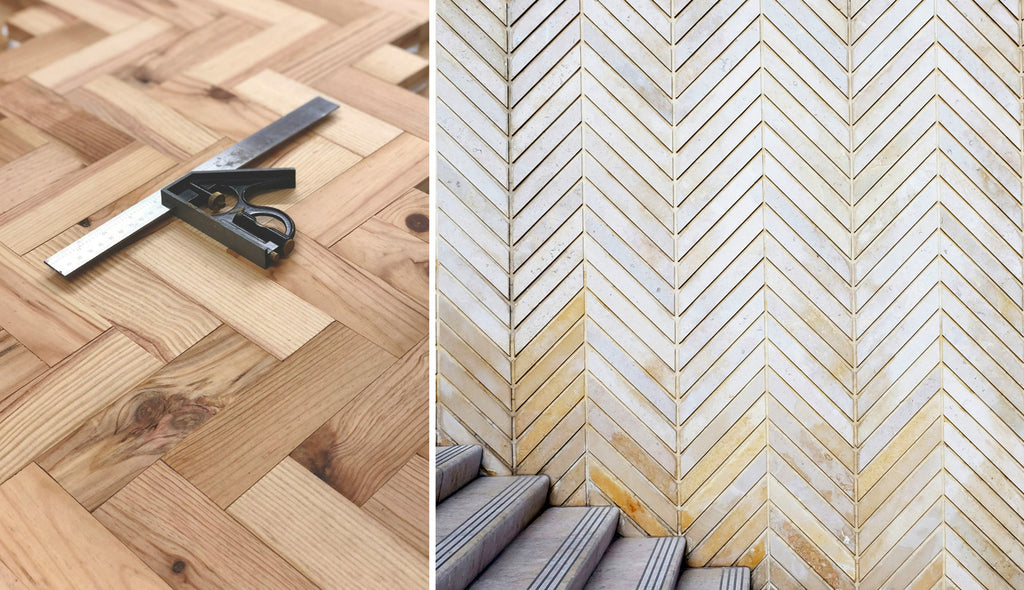
The History of Herringbone
Now that we’re on the same page about what herringbone is and isn’t, let’s look at the pattern’s history.
Pinpointing who invented the herringbone pattern remains elusive due to its ancient roots. Perhaps the earliest instance of the herringbone pattern is found in ancient Egyptian artifacts, where it adorned clothing and linens. The woven pattern was favored for its durability as well as aesthetic appeal.
Evidence of the herringbone pattern is found in abundance across the Roman Empire, in clothing and artifacts, yes, but most prominently in their engineering feats, architecture, and artifacts. The unique arrangement of the herringbone pattern made (and still makes!) for even distribution of weight and reinforced stability. It was the preferred choice in certain construction projects where durability was paramount, such as in roads, bridges and walls.
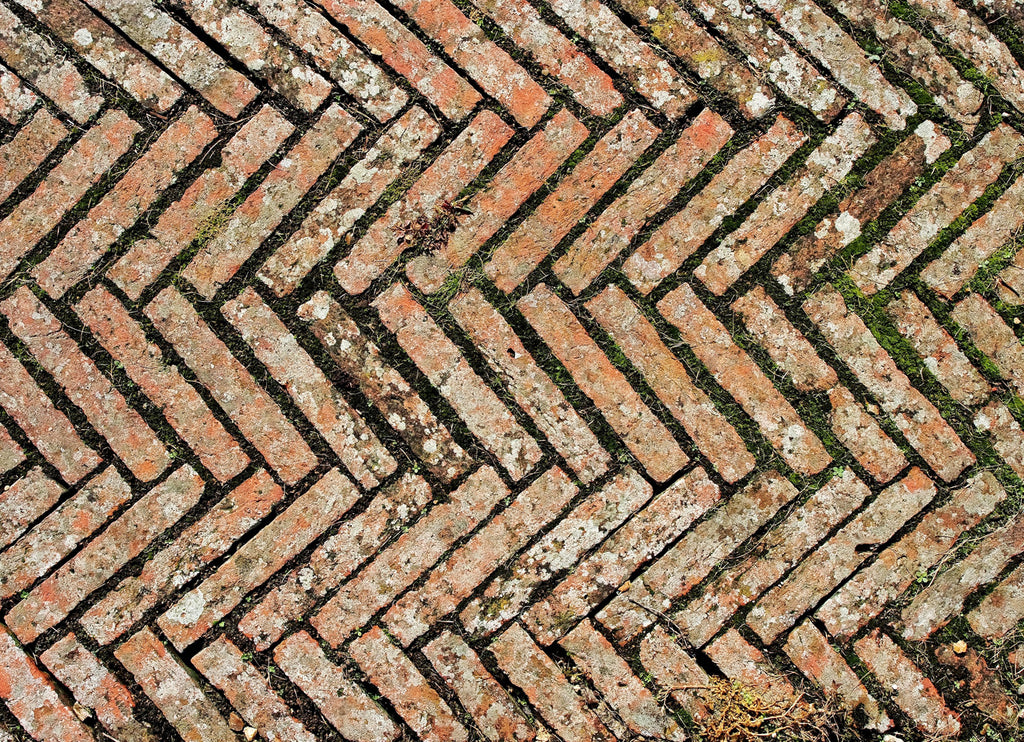
It was during the early medieval period that the herringbone pattern gained prominence in Europe. The pattern's popularity soared during the Renaissance era, between the 14th and 17th centuries, when it was commonly woven into fabrics for garments worn by the nobility and aristocracy. It added a sense of luxury and sophistication to clothing, reflecting the wealth and status of the wearer.
Unsurprisingly, the herringbone pattern found its way into European architecture and design too. It was used in various decorative elements such as flooring, brickwork, and woodwork, particularly in grand palaces, churches, and public buildings across Europe.
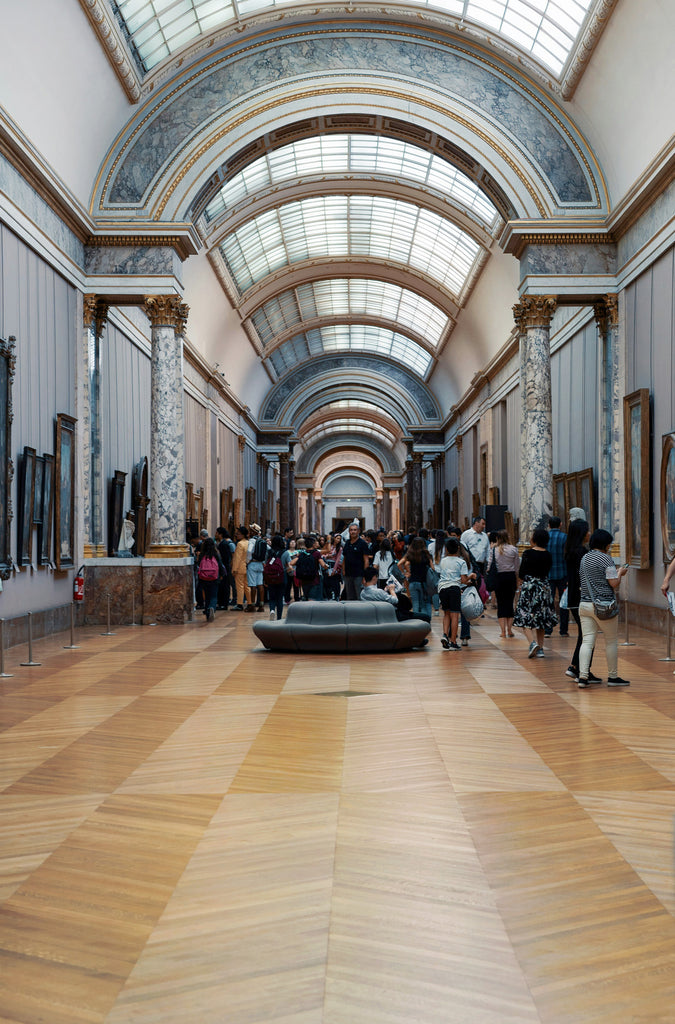
Chevron floor in the Louvre Museum, Paris
The Role of Herringbone Cloth in Camouflage History
During the early 20th century, particularly around the time of World War I, herringbone cloth was a popular choice for military garments. It was initially adopted by the French military for use in their uniforms, primarily for its effectiveness as camouflage in certain environments.
The French were among the first to experiment with camouflage patterns to better conceal their soldiers on the battlefield. The pattern proved effective in breaking up the human silhouette against natural backgrounds like forests and fields. This made it harder for enemy forces to spot soldiers from a distance.
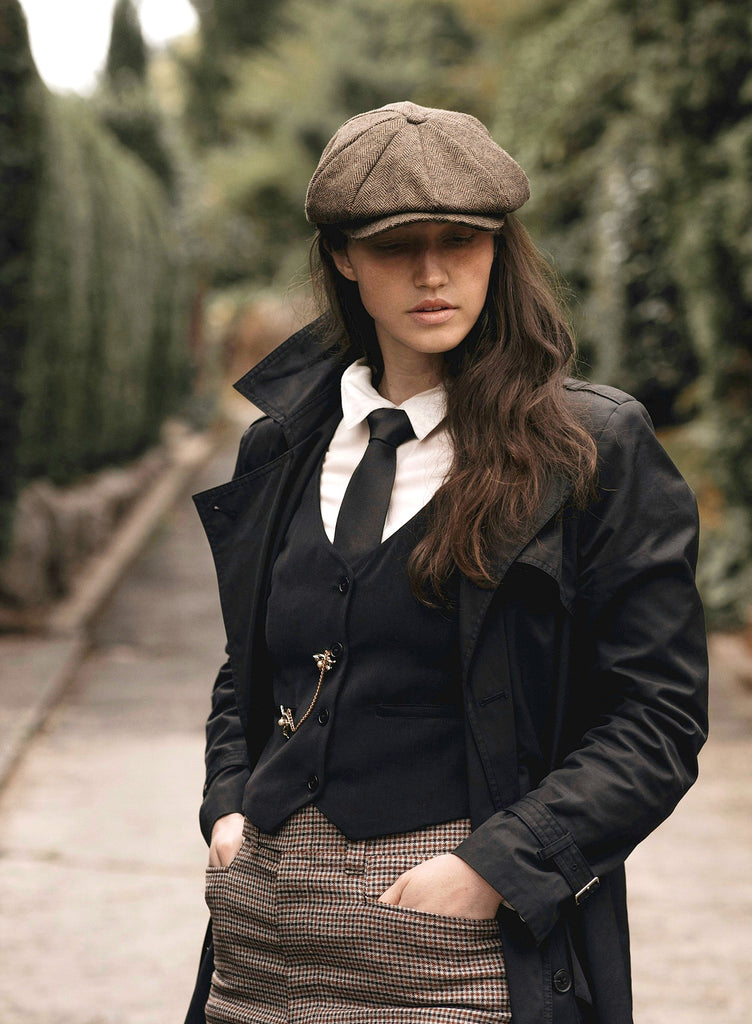
Woman wearing a cap with a herringbone weave pattern
The success of the herringbone pattern in French military uniforms inspired other nations to adopt similar camouflage designs. During World War II, various countries, including the United States, Germany, and the United Kingdom, began incorporating herringbone and other camouflage patterns into their military clothing for both practical and tactical purposes.
Since then, herringbone and similar patterns have remained prevalent in military uniforms, especially in specialized units and in certain operational environments where effective camouflage is crucial.
What Fabric is Herringbone?
As we have established, herringbone is not a fabric in itself but rather a pattern that can be applied to various types of textiles.
That said, herringbone cloth is typically wool – ideal, given wool’s ability to showcase intricate weaving techniques. Herringbone fabric is often featured in winter suits, coats, and other cold weather accessories.
Cotton, silk, and silk blend herringbone fabric offers a lighter and more breathable option, making it suitable for warm weather shirts, lightweight jackets, and fine accessories.
At R. Hanauer, we feature a beautiful series of timeless, reversible, 13” herringbone pocket squares. Available in purple, green, blue, gray, each 100% silk square is hand made in Italy. 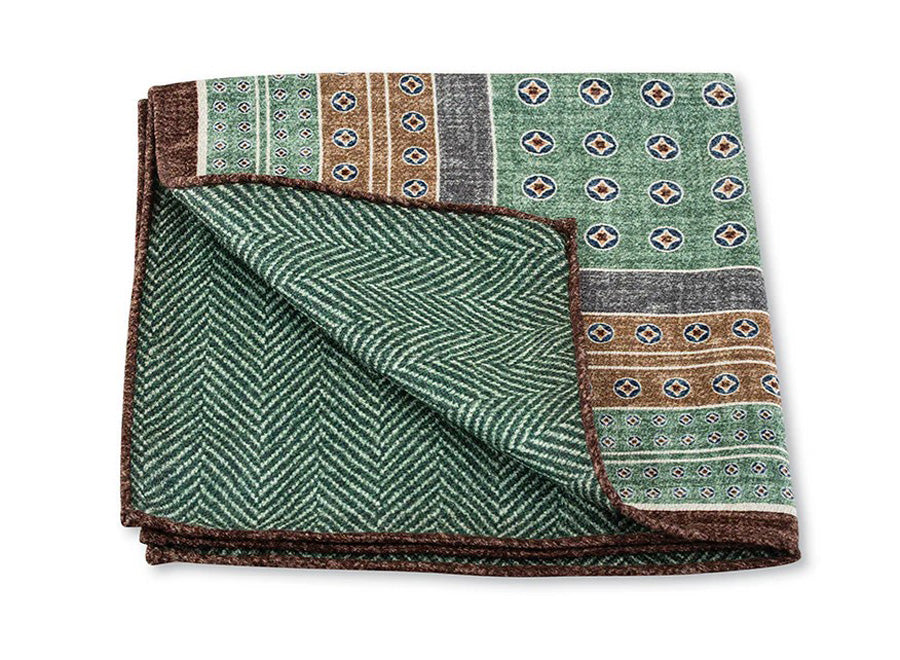
Show us your herringbone pieces and, if they have been passed down, share their history! We’re on Instagram and Facebook – be sure to tag us with @RHanauer.
And if you want to read more about menswear history, or are keen to get sought-after tips and sartorial inspiration, check out our blog – The Gentleman’s Guide.
Related Articles:
- The History of Silk: A Journey through Time & Luxury
- Tweed: A Look at the Timeless Appeal and Versatility of this Iconic Fabric
- What is Grosgrain?
- Madras Fabric: What It Is and Why You Should Wear It
- Seersucker: What It Is, How to Wear It & How to Care for It
- The History of Tartan
